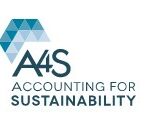
CFOs who improve their organization’s environmental, social and governance (ESG) reporting to investors will enjoy improved access to capital, stock performance, and customer loyalty, according to Gartner, Inc.
“Approximately one in 10 investors find the ESG information they are looking for in corporate disclosures,” said Stephen Adams, director in the Gartner Finance practice. “There is an enormous opportunity here for most companies to stand out better to investors simply by providing the information they are looking for.”
The benefits of delivering better ESG performance are also not purely financial in nature. A company that improves its ESG performance will tend to have a reduced compliance burden, see higher levels of employee satisfaction and find talent more easily, in addition to being a less likely target for shareholder activism.
“ESG reporting is more widely watched than many CFOs realize,” said Mr. Adams. “Equity investors and asset managers are the visible tip of the iceberg, but beneath the surface 91% of banks monitor ESG, as well as 24 global credit ratings agencies, 71% of fixed income investors and over 90% of insurers. CFOs who are not conveying an ESG story to these stakeholders are missing out.”
To help clients with their ESG reporting Gartner created a Financial Brand Framework (see Figure 1). The Financial Brand Framework helps CFOs to assess their company’s ESG investment proposition and identify opportunities for improvement in seven critical areas
Figure 1. Gartner’s Financial Brand Framework

Source: Gartner (April 2021)
Company Strategy
When disclosing ESG information to investors around company strategy, the elementary stage will be to show how corporate strategic goals will drive or align to the United Nation’s Sustainable Development Goals. Companies in a progressive stage of maturity here will disclose how ESG is supporting the key value drivers for the business, such as sales productivity. Firms at the leading edge of maturity are categorized by having direct board level oversight into ESG matters and communicating to stakeholders how the board is driving action.Products and Services
Firms at the elementary stage will be able to show how ESG has created brand value improvements for the organization. Progressive groups may showcase sustainable products, while leading edge companies can point to ESG as a mechanism to preserve market share. Things such as higher marketing ROI and lower customer acquisition costs can demonstrate the valuable relationship between ESG and a company’s products and services.
Financial Track Record
At the elementary stage, firms should demonstrate capital allocation to green initiatives such as lightweight packaging or more efficient offices. Firms at the progressive stage will disclose how environmental efficiency is driving cost reduction and at the leading edge, firms will demonstrate how they balance profitability and sustainability, for instance by commercializing clean technology.
Performance Outlook
At the elementary stage of maturity with ESG disclosure, companies should be able to demonstrate an ESG-related ability to attract new customers. At the progressive stage, CFOs will be disclosing potential ESG-linked industry or market developments that may change the landscape, like shifts in customer behavior or product offerings in an industry. Leading edge firms will be able to showcase and quantify growth opportunities at the individual company level that stem from ESG activities.
Execution Credibility
At the earliest stages of maturity this is more focused on setting out clear goals, but as firms reach a progressive level of maturity this is going to shift more towards reporting of progress against these in-progress goals. Leading edge firms will showcase how they continued commitment to these goals even in times of disruption. For example, delivering on carbon reduction targets during a downturn or offering programs to support employee mental health during a pandemic.
Risk Resilience
One of the key reasons that investors and financial stakeholders review ESG disclosure is because it gives good insight into the risks a company faces. At the lowest level of maturity firms can demonstrate how ESG activity mitigates broad strategic risks such as regulatory intervention or customer retention. As maturity advances it will be possible to show how ESG efforts are mitigating physical and financial risks too, like weather-related supply chain disruption or regulatory fines.
Shareholder Culture
At first, firms should focus on demonstrating the relationship between ESG and total shareholder return as a way to tie ESG and shareholder value. More mature firms will implement policies to protect shareholder rights such as giving them a say on pay or fairer voting power policies. The firms with the highest ESG disclosure maturity will be demonstrating ESG-linked remuneration policies for senior management and even the board.



